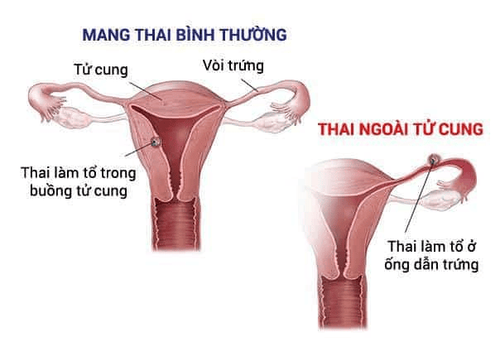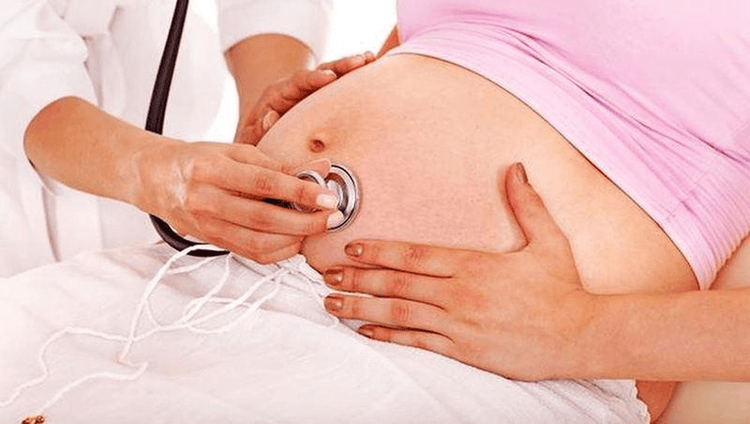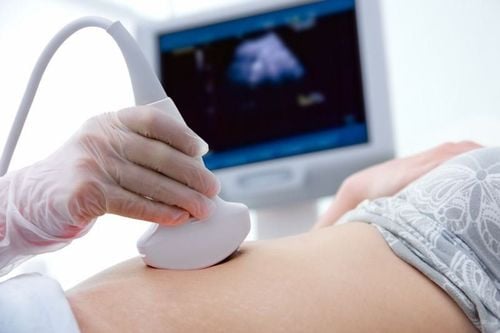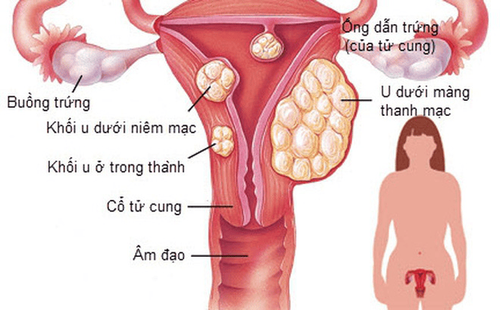This is an automatically translated article.
The article is professionally consulted by Specialist Doctor Department of Obstetrics and Gynecology - Vinmec Hai Phong International General Hospital.
During pregnancy, the mother's body produces hormones that help the fetus develop. Uterine bleeding during pregnancy occurs in about 25% of women, comes from many different causes and needs to be examined and diagnosed accurately because it can be dangerous to the health of both mother and baby.
1. Causes of vaginal bleeding during pregnancy
Uterine bleeding during pregnancy can appear at any stage of pregnancy, especially in the first 3 months.
This condition may be caused by changes in the endometrium during preparation for implantation. Accordingly, bleeding occurs from 1-2 weeks from the time of conception, sometimes an early sign of pregnancy. According to statistics, about 20-30% of pregnant women experience vaginal bleeding during early pregnancy, which can fall into the following cases:
1.1. Threatening miscarriage
Some pregnant women see vaginal bleeding when they are about 4 - 8 - 12 weeks pregnant. This is because the embryo is not firmly attached to the wall of the uterus. Bleeding is often accompanied by symptoms such as back pain, heaviness in the lower abdomen...
During pregnancy, the mother's body produces hormones to help the fetus develop. However, sometimes the amount of hormone secreted is not enough, leading to vaginal bleeding, similar to menstruation. This usually goes away after the first 3 months of pregnancy.
Trắc nghiệm: Bạn có hiểu đúng về dấu hiệu mang thai sớm?
Các dấu hiệu mang thai sớm không phải chỉ mỗi trễ kinh mà còn có rất nhiều dấu hiệu khác như xuất huyết âm đạo, ngực căng tức,… Điểm xem bạn biết được bao nhiêu dấu hiệu mang thai sớm thông qua bài trắc nghiệm này nhé!
1.2. Stillbirth
In case the fetus develops abnormally, it will cause stillbirth. One-third of cases stem from a chromosomal disorder. Other possible causes of stillbirth are mechanical shock, infection... The pregnant woman's body will reject the fetus starting with signs of uterine bleeding during pregnancy.
1.3. Thai lost place
Ectopic pregnancy is a condition in which the embryo is located outside the uterus. Signs of an ectopic pregnancy include vaginal bleeding during pregnancy, and sharp pain in the lower abdomen. If the ectopic pregnancy ruptures and is not handled in time, it can be life-threatening for the mother. In addition, those who have a history of abortion, have an infection in the genital area, have had an ectopic pregnancy, are more likely to have this condition.

1.4. Egg pregnancy
Eggs after being fertilized will form embryos and appendages such as amniotic sac, placenta, placenta... The development of the embryo and these appendages must correspond to each other. However, in some cases, the appendage develops too quickly, resulting in incompatibility with the embryo.
This causes the thorns to quickly degenerate, forming fluid-filled sacs that stick together like bunches of grapes. These injuries cause the egg to fail, but the placenta is still nourished through the mother's blood supply, so it continues to function. This phenomenon is called oviposition.
Signs of ectopic pregnancy are women with uterine bleeding during pregnancy, blood that is dark brown or red, persistent or massive bleeding.
1.5. Baby placenta
Placental abruption is a condition in which the placenta separates from the uterine wall before the baby is born. Common symptoms are abdominal pain, vaginal bleeding. Once diagnosed placental abruption, it is necessary to closely monitor the status of the fetus, pregnant woman and uterine contractions. The treatment will depend on the degree of placental abruption and gestational age. If the pregnancy is mature, the doctor will monitor and may prescribe induction of labor.
1.6. Striker together
Normally, the placenta attaches to the front, back, and bottom of the uterus. If for some reason, for example, the uterus has an old surgical scar, is deformed, has a history of menstrual regulation, etc., the placenta will stick low to the waist of the uterus, partially or completely covered. set of holes in the uterus, leading to obstruct the path of the fetus during labor. The sign of placenta previa is uterine bleeding during pregnancy, which occurs when there is separation between the placenta and the uterus.
1.7. Other cases
Other causes can lead to vaginal bleeding during pregnancy, including genital tract infection, cervical tumor... or after sex can also cause bleeding.

2. What to do when pregnant with vaginal bleeding?
Pregnant women with vaginal bleeding are not uncommon. Many cases of bleeding are caused by minor causes and do not require treatment. However, there are still pregnant women who fall into dangerous situations.
Therefore, when experiencing abnormal bleeding, it is necessary to notify the doctor for timely treatment, especially in the early stages of pregnancy. This is extremely necessary to determine the cause of bleeding that is dangerous for the pregnant woman.
3. What cases need treatment?
Ectopic pregnancy: In this case, the pregnant woman often has to have emergency surgery to protect the fallopian tubes. However, if the fetus is not yet growing, it is possible to apply drug treatment. Infection: Pregnant women will be prescribed appropriate antibiotics. Threatened preterm birth: Women need to rest, accompanied by treatment with antispasmodic drugs. Other cases: Pregnant women should be closely monitored during pregnancy. In all cases, women with symptoms of uterine bleeding during pregnancy need to be examined to diagnose the exact cause in order to have appropriate and timely treatment, to avoid dangerous complications for both pregnant women. and unborn baby.
Please dial HOTLINE for more information or register for an appointment HERE. Download MyVinmec app to make appointments faster and to manage your bookings easily.













